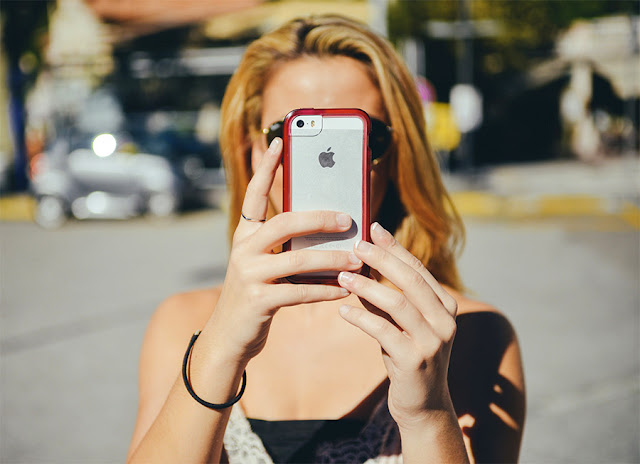Great Features For Video Creators On iPhone 7
My first reaction to the launch of the iPhone 7 was anger that Apple had removed the 3.5mm headphone jack. Two days on I’m still not convinced it’s the right move for users but I’ll admit the phone seems to offer the vlogger or video maker some great features.
A lot of the initial reports have been about the dual lens system on the iPhone 7, in fact that only applies to the iPhone 7 Plus. The smaller iPhone 7 is only equipped with the wide angle f1.8 lens. Both versions being able to shoot 1080p footage at 30 and 60 fps.
Both versions of the phone seem to offer plenty to today’s video creator, although we will have to wait until 16th September 2016 before we can get hands-on with the phone. Until then here’s what Apple say we are going to get.
Better low light performance
Both the iPhone 7 and iPhone 7 Plus have a new 12-megapixel wide
angle 28mm f/1.8 six element lens. According to Apple this will transmit about
50% more light to the sensor, compared to the iPhone 6s. We will need to wait
to see what that will mean in practice but I think it is safe to assume that
shooting indoors without video lights will be easier.
High resolution video
The iPhone 7’s 12-megapixel rear facing camera will give
video creators the capability to shoot 4k footage at 30fps. Personally I haven’t
bought-into the 4k hype. Most people just aren’t watching on 4k devices nor is 4k
critical to your storytelling. However, once you transfer your footage you your
computer 4k does allow you to reframe your shots by selective cropping without
losing clarity in an HD timeline.
Slow Mo
The combination of that new camera and the A10 quad core
processor will enable video creators to shoot at upto 120 fps at HD1080p or
upto 240 fps at 720p. If you are into creating slow motion movies, you will
obviously like this feature.
Better front-facing camera
The front facing camera has been upgraded to 7 megapixels.
For the vlogger that’s great news. Until now, if you wanted to shoot yourself
in full HD1080p you had to use the reaer camera and get a friend to frame the
shot for you, monitor the phone’s screen in a mirror or do it by trial and
error. With a full HD front facing camera it’s eezy-peasy to make sure you have
framed yourself correctly.
Steady on – It’s got optical image stabilization
To get good blur free results I have always had to put my
iPhone on a tripod. Now things should literally be clearer in hand held shots since
the iPhone 7 is shipping with what Apple call cinematic video stabilization,
available at both 1080p and 720p. Combined with the f/1.8 lens we should see
crisper footage at lower light levels.
Optical zoom
If you go large and opt for the iPhone 7 Plus then you get
not one 12-megapixel cameras but two. Alongside the first with a wide angle 28mm
f1.8 lens you get an additional one with a 56mm f2.8 lens.
No doubt the new dual lens system is the result of Apple
buying LinX Imaging in 2014. LinX Imaging specialised in multi aperture imaging
and managed to solve the problem of successfully combining multiple images
taken simultaneously. This technology has enabled Apple to give the iPhone 7 a
so called optical zoom. The combination of a wide angle lens plus a telephoto
lens means you now can zoom up to 2x without losing image clarity. Upto 6x
digital zoom is also available. Other companies have been working on the same thing, such as the Corephotonic dual-camera. In fact the technology looks very much like the iPhone 7 Plus.
That’s a great improvement for the iPhone video maker. For a start, it will make framing much easier. Until now you either had to physically move your camera back and fore to frame the shot or use the digital zoom and accept a loss in resolution. Now the video maker has much more flexibility. Set up your camera so your framing is approximately correct and then get it spot on with the optical zoom. Brilliant!
LinX Imaging used to claim their technology could deliver "stunning
color images and high accuracy depth maps" producing images of SLR quality
but without the bulk of an SLR.
By the way. The work LinX Imaging was doing, before Apple
bought the company, allowed them to increase sensitivity for better image detail
and reduce exposure times to reduce motion blurring. All of which sounds
familiar from earlier on in this post.
What next
Apple make no mention of this but the LinX technology does more than provide optical zoom and improve low light performance. Because the LinX technology can produce depth maps from a single photo (using multiple
apertures, like the iPhone 7 Plus), the information can be used to produce 3D
point clouds of objects. There’s a tantalizing possibility that the iPhone 7 Plus (or a future iPhone) could create 3D scans of objects, to refocus an image with a
synthetic depth of field effect and possibly eliminate or add objects to the image. If the phone can do that, I might even forget about that missing 3.5mm headphone socket.


